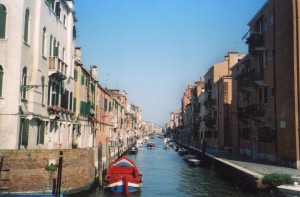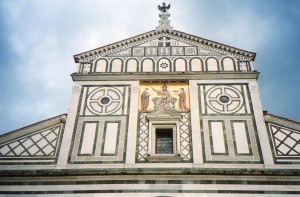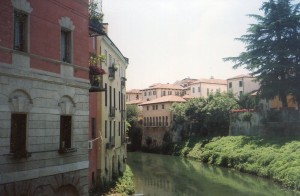The Renaissance is a great period to connect with today.
Many people’s perspectives were expanding, as they are in our globalized world. The Renaissance is not only especially relevant today, it was also much richer than most people have realized.
It’s been conventional to divide history into the ancient, medieval and renaissance periods. But recent studies have shown that history’s timeline is far more interesting. Many currents from the ancient West enriched the Middle Ages, as several of my posts on Romanesque and Gothic architecture show. Cultural leaders in the Renaissance drank from both fountains. No previous time had so many eras to be inspired by.
The Florentine Renaissance blossomed in the 15th century, but Europe had been resurrecting parts of its classical past for more than 400 years. Cities like Venice, Pisa and Genoa expanded their commerce in the Mediterranean in the early 11th century. The Papacy was reforming the Church then and strengthening itself. It was now more independent from the Holy Roman Emperor–the College of Cardinals, rather than that dude, now chose the future pope. Europe’s economy was growing, and people were naturally looking back to ancient Rome for artistic inspiration and ways to organize their thought.
The above photo is of the basilica of San Miniato in Florence, and it’s what I was standing in front of when I took the first shot in this post. They don’t call Italy the beautiful country for nothing!
People credit 15th century Florentines with resurrecting the ancient West’s emphasis on permanent geometric forms. They certainly advanced it into new directions, like 3-dimensional perspective in painting, but they expanded on ideas that were already commonplaces. San Miniato’s frontage was designed and begun back in the 11th century. Its
1. Temple-front form
2. Square geometry
3. Triple rhythm
established static geometric ratios as models of order and truth as Florence and Europe were growing. In the center is a Byzantine style icon of Christ which has a triple rhythm as proportioned as Raphael’s rondos of the Christ child from the beginning of the 16th century.
The above picture is from Heaven or Vicenza, Italy–I forget which. In the 16th century, a lot of Venice’s leading families built estates around there, and they hired Andrea Palladio to design them. He was also devoted to the idea of the static and balanced form as a model of truth and order. Like 15th and 16th century Florentines, he was following ideas from the 11th century–which were following ideas from ancient Greece and Rome.
Time isn’t sliced into pieces like a salami. Cultures have lots of continuity, as many of my recent posts on China show (see Deep Foundations of the Great Wall). A culture is a boundless treasure chest–you can see many pasts in it, and thus never run out of perspectives. The Renaissance was one of the West’s most bountiful periods, so we’ll explore more of its facets soon. Get ready to fly high.





Comments on this entry are closed.